|
What problems does this product solve?
Electrical equipment includes any machine powered by electricity. They usually consists of an enclosure, a variety of electrical components, and often a power switch. Examples of these include: |
| Major appliance |
| Microcontroller |
| Power tool |
| Small appliances |
| More specifically, often electrical equipment refers only to components part of the electrical distribution system such as: |
| Electric switchboards |
| Distribution boards |
| Circuit breakers and disconnects |
| Electricity meter |
| Transformers |
| Electrical room |
| Electrical Equipment in Hazardous Areas |
| Grounding kit |
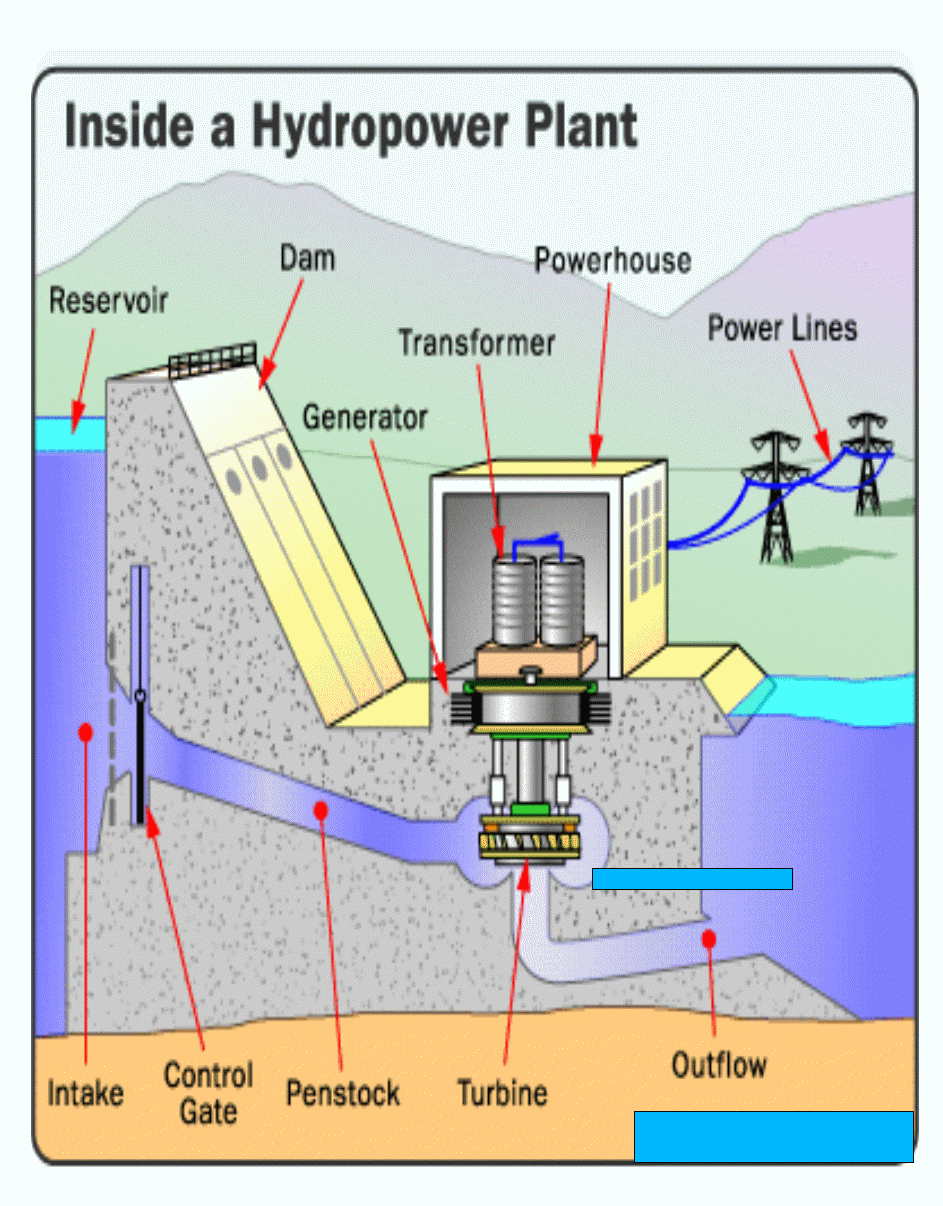 Hydro Electric Projects
Hydro Electric Projects
Receiving stations Transformers |
|
Nuclear Power Plants |
|
Power Transformer Distribution Transformer Double Ratio Distribution Transformer ACSR Conductor (11 KV) C&R panel sets Transfer Oil (Steel Tubular) Poles (PCC) Poles (11 KV XLPE) Cable Cablen(LT PVC 1.1 K.V) Control Cable 2.5mm2 Other Hardware Energy meters(Static 1ō and 3ō) Power Transformer Distribution Transformer Double Ratio Distribution Transformer ACSR Conductor C&R Panel VCB Transfer Oil (Steel Tubular) Poles (PCC) Poles MTR (11 KV XLPE) Cable 120 MM 2 3 CORE Cablen(LT PVC 1.1 K.V) 630mm2 single core Control Cable 2.5mm2 11 KV Disc fitting 45 KN T&C 11 KV Disc Insulators 45 KN T&C 11 KV Disc Insulators 45 KN B&S 11 KV Guy Insulators 11 KV Pin Insulators 9 KV LA'S(10 KA) Line Type 60 KV LA'S 33 KV isolators without E/B LT SHACKLE INSULATORS Single tenision fittings for panther Single tenision fittings for Zebra Single suspension fittings for Zebra Single suspension fittings for twin Zebra Single tension fittings for Moose Single suspension fittings for Moose Single tension fittings for twin Moose Single suspension fittings for Zebra with arcking horns Single tension fittings for Panther with arcking horns Single tension fittings for twin Zebra Double tension fittings for panther with arcking horns PG Clamps Zebra to Zebra cond. PG Clamps for single moose P I Clamps for Zebra P I Clamps for Moose P I Clamps for twin Moose P T clamps for Zebra T clamps for Twin Moose to single Zebra T clamps for Twin Moose to single Moose T clamps for Twin Moose Moose T clamps for Twin Zebra to single Zebra T-clamps for panther T clamps for Zebra to Zebra T clamps assembly for earth wire Mid span compression joint for earth wire T clamps for twin Moose to twin Moose Suspension clamps for earth wire Mid span compression joint for panther Mid span compression joint for Zebra Repair sleeves for panther Repair sleeves for Zebra 30 Volt DC.Distribution Board L T AC Distribution Board Energy meters(Static 1ō and 3ō) 5-30 amps Single phase 10-60 Amps three phase 20-80 Amps three phase 10-40 Amps 3-phase. Hand Held Device (M R I) |
| Power transmission line materials. |
| From points of generation to points of demand. Switchgear METERING PROTECTION LIGHTING CONSUMER LUMINARIES Wire & Cables |
| Generators |
| Electrical Circuits |
| Direct Current vs. Alternating Current |
|
BATTERIES and FLASHLIGHTS Batteries - Flashlight - Lanterns - Streamlight Flashlight |

|
|
BOXES and TROUGHS Boxes - Troughs - Weatherproof Box & Cover |

|
|
CENTRAL CLEANING Central System Accessories - Nutone Connector - Nutone Replacement Bag - |
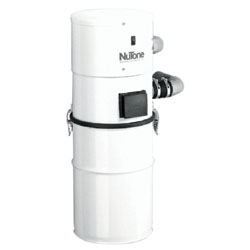
|
 CONDUIT and CONDUIT FITTINGS
CONDUIT and CONDUIT FITTINGS*Note: 10' conduit cannot be shipped via UPS, Fedex or USPS. All conduit order must be shipped via Freight Truck (i.e. Roadway, RedStar). Customers placing orders with conduit will be contacted via phone and or email with the adjusted shipping cost. Conduit - Conduit Fittings - Explosion Proof - Nipples - Pvc - Wiremold -  CONTROLS and TIMERS
CONTROLS and TIMERSTimers that switch electrical devices on and off are useful for automatic control of lamps, heaters, humidifiers, and other equipment Motion Sensor - Timers - 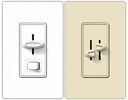 DIMMERS and FAN CONTROLS
DIMMERS and FAN CONTROLSfan controls and dimmers to set any rooms style Dimmer - Fan Speed Control - 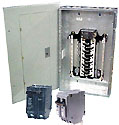 DISTRIBUTION EQUIPMENT
DISTRIBUTION EQUIPMENTCircuit Breakers - Meter Sockets - Motor Controls - Panels And Loadcenters - Safety Switches - Sub Meter -  Emergency Lighting
Emergency Light - Emergency Light Accessory - Emergency Light Battery - Exit Sign - Exit Sign Accessory
Emergency Lighting
Emergency Light - Emergency Light Accessory - Emergency Light Battery - Exit Sign - Exit Sign Accessory
| |
 FANS AND HEATERS
FANS AND HEATERSCeiling Fan Accessories - Ceiling Fans - Exhaust Fans - Fans, Commercial - Heaters - Thermostats - | |
 FUSES
FUSES
| |
Batteries, fuel cells and solar cells all produce something called direct current (DC).
Electrical Ground
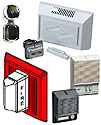 ALARM, SIGNALING, INTERCOM, and DETECTORS
ALARM, SIGNALING, INTERCOM, and DETECTORS | |
Bells & Chimes - Buttons - Fire Alarm - Intercom - Smoke & Co Detectors -
Box Cover Units - Cartridge Fuse Frnr Or Dlnr - Cartridge Fuse Frsr Or Dlsr - Cartridge Fuse Ktk Type - Cartridge Fuse Low Peak - Cartridge Fuse Sc Type - Cartridge Fusetron Fnm - Cartridge Fusetron Fnq - Fuse Block - Fuse Clip Clamp - More Categories
 HOME AUTOMATION , TELEPHONE, & VIDEO
HOME AUTOMATION , TELEPHONE, & VIDEOHai Omni - Home Automation - Life Safety - Power Line Carrier - Structured Wiring - Telephone - Video - 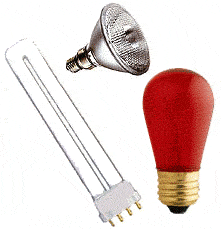 LIGHT BULBS
LIGHT BULBSChanger - Compact Fluorescent - Decorative Light Bulbs - Fluorescent Lamps - Halogen - Hid - Incandescent - Miniature - Octron - 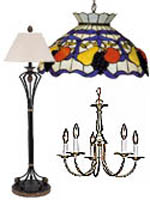 LIGHTING FIXTURES
LIGHTING FIXTURESBallast - Bath And Vanity Lighting - Chandelier Lighting - Close To Ceiling - Closeout Lighting - Commercial Lighting - Decorative Elements - Floor Lamp - Fluorescent Lighting - Hall And Foyer Lighting - More Categories 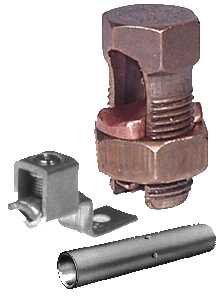 LUGS, BUGS and FASTENERS
LUGS, BUGS and FASTENERSBugs - Lugs - Terminal -  New
New
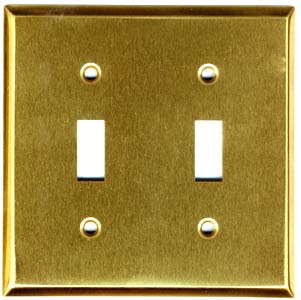 PLATES
PLATESAccessory - Architectural - Blank Up Plate - Emergency, Oil & Gas Burner - General Construction Finishes - Lexan And Plastic - Outlet Box Covers - Plate Screw - 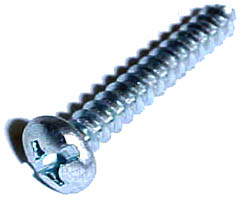 SCREWS, NUTS, & BOLTS
SCREWS, NUTS, & BOLTSAnchor - Anchor Bolts - Anchor Kit - Assortment Of Plate Screws - Bolt Rod - Drop-In - Drywall Screw - Eye Bolt - Flat Head Machine Screw - Hex Cap Screw - More Categories  STAPLES, STRAPS and TAPE
STAPLES, STRAPS and TAPECaddy - Staples - Straps - Tape - Wirenut -  TOOLS and MISC
TOOLS and MISCDrill Bits - Hand Tools - Hardware - Knock Out Punch - Power Tools - Reference Book - Safety Equipment - Saw - Testers - Tool Carriers - More Categories 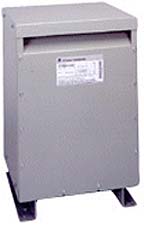 TRANSFORMER
TRANSFORMER1 Ph Dry Type Transformer - 3 Ph Dry Type Transformer - Bell - Buck Boost - Chime - Line Voltage - Low Voltage -  WIRE and CABLE
WIRE and CABLE*Note: Because of the volatile Copper & Aluminum market, prices can change without notice from the website. Shipping charges for orders exceeding 1000' or 100 lbs. will be adjusted. You will be contacted with the correct shipping charges before order is shipped. Cord - Wire -  WIRING DEVICES
WIRING DEVICESCord Connector - Household Wiring Device - Plugs & Caps - Receptacle - Socket - Surge Suppressor - Switch - Taps - Twist Lock Devices -  ALARM, SIGNALING, INTERCOM, and DETECTORS
ALARM, SIGNALING, INTERCOM, and DETECTORSBells & Chimes - Buttons - Fire Alarm - Intercom - Smoke & Co Detectors -  BATTERIES and FLASHLIGHTS
BATTERIES and FLASHLIGHTSBatteries - Flashlight - Lanterns - Streamlight Flashlight -  BOXES and TROUGHS
BOXES and TROUGHSBoxes - Troughs - Weatherproof Box & Cover -  CENTRAL CLEANING
CENTRAL CLEANINGCentral System Accessories - Nutone Connector - Nutone Replacement Bag -  CONDUIT and CONDUIT FITTINGS
CONDUIT and CONDUIT FITTINGS*Note: 10' conduit cannot be shipped via UPS, Fedex or USPS. All conduit order must be shipped via Freight Truck (i.e. Roadway, RedStar). Customers placing orders with conduit will be contacted via phone and or email with the adjusted shipping cost. Conduit - Conduit Fittings - Explosion Proof - Nipples - Pvc - Wiremold -  CONTROLS and TIMERS
CONTROLS and TIMERSTimers that switch electrical devices on and off are useful for automatic control of lamps, heaters, humidifiers, and other equipment Motion Sensor - Timers -  DIMMERS and FAN CONTROLS
DIMMERS and FAN CONTROLSfan controls and dimmers to set any rooms style Dimmer - Fan Speed Control -  DISTRIBUTION EQUIPMENT
DISTRIBUTION EQUIPMENTCircuit Breakers - Meter Sockets - Motor Controls - Panels And Loadcenters - Safety Switches - Sub Meter -  Emergency Lighting
Emergency Light - Emergency Light Accessory - Emergency Light Battery - Exit Sign - Exit Sign Accessory -
Emergency Lighting
Emergency Light - Emergency Light Accessory - Emergency Light Battery - Exit Sign - Exit Sign Accessory -
 FANS AND HEATERS
FANS AND HEATERSCeiling Fan Accessories - Ceiling Fans - Exhaust Fans - Fans, Commercial - Heaters - Thermostats -  FUSES
FUSESBox Cover Units - Cartridge Fuse Frnr Or Dlnr - Cartridge Fuse Frsr Or Dlsr - Cartridge Fuse Ktk Type - Cartridge Fuse Low Peak - Cartridge Fuse Sc Type - Cartridge Fusetron Fnm - Cartridge Fusetron Fnq - Fuse Block - Fuse Clip Clamp - More Categories  HOME AUTOMATION , TELEPHONE, & VIDEO
HOME AUTOMATION , TELEPHONE, & VIDEOHai Omni - Home Automation - Life Safety - Power Line Carrier - Structured Wiring - Telephone - Video -  LIGHT BULBS
LIGHT BULBSChanger - Compact Fluorescent - Decorative Light Bulbs - Fluorescent Lamps - Halogen - Hid - Incandescent - Miniature - Octron -  LIGHTING FIXTURES
LIGHTING FIXTURESBallast - Bath And Vanity Lighting - Chandelier Lighting - Close To Ceiling - Closeout Lighting - Commercial Lighting - Decorative Elements - Floor Lamp - Fluorescent Lighting - Hall And Foyer Lighting - More Categories  LUGS, BUGS and FASTENERS
LUGS, BUGS and FASTENERSBugs - Lugs - Terminal -  New
New
 PLATES
PLATESAccessory - Architectural - Blank Up Plate - Emergency, Oil & Gas Burner - General Construction Finishes - Lexan And Plastic - Outlet Box Covers - Plate Screw -  SCREWS, NUTS, & BOLTS
SCREWS, NUTS, & BOLTSAnchor - Anchor Bolts - Anchor Kit - Assortment Of Plate Screws - Bolt Rod - Drop-In - Drywall Screw - Eye Bolt - Flat Head Machine Screw - Hex Cap Screw - More Categories  STAPLES, STRAPS and TAPE
STAPLES, STRAPS and TAPECaddy - Staples - Straps - Tape - Wirenut -  TOOLS and MISC
TOOLS and MISCDrill Bits - Hand Tools - Hardware - Knock Out Punch - Power Tools - Reference Book - Safety Equipment - Saw - Testers - Tool Carriers - More Categories  TRANSFORMER
TRANSFORMER1 Ph Dry Type Transformer - 3 Ph Dry Type Transformer - Bell - Buck Boost - Chime - Line Voltage - Low Voltage -  WIRE and CABLE
WIRE and CABLE*Note: Because of the volatile Copper & Aluminum market, prices can change without notice from the website. Shipping charges for orders exceeding 1000' or 100 lbs. will be adjusted. You will be contacted with the correct shipping charges before order is shipped. Cord - Wire -  WIRING DEVICES
WIRING DEVICESCord Connector - Household Wiring Device - Plugs & Caps - Receptacle - Socket - Surge Suppressor - Switch - Taps - Twist Lock Devices - |
|
Electricity powers our world and our bodies. Harnessing its energy is both the domain of imagined sorcery and humdrum, everyday life -- from Emperor Palpatine toasting Luke Skywalker, to the simple act of ejecting the "Star Wars" disc from your PC. Despite our familiarity with its effects, many people fail to understand exactly what electricity is. When put to the question, even acclaimed inventor Thomas Edison merely defined it as "a mode of motion" and a "system of vibrations."
­To­ward the end of the 19th­ century, scien­ce­ was barreling along at an impressive pace. Automobiles and aircraft were on the verge of changing the way the world mov­ed, and electric power was st­eadily making its way into more and more homes. Yet even scientists of the day still viewed electricity as something vaguely mystical. It wasn't until 1897 that scientists discovered the existence of electrons -- and this is where electricity starts.
Matter, as you probably know, is composed of atoms. Break something down to small enough pieces and you wind up with a nucleus orbited by one or more electrons, each with a negative charge. In many materials, the electrons are tightly bound to the atoms. Wood, glass, plastic, ceramic, air, cotton -- these are all examples of materials in which electrons stick with their atoms. Because the electrons don't move, these materials can't conduct electricity very well, if at all. These materials are electrical insulators. In the late 19th century, electricity truly had a noble or even divine reputation -- to the extent that members of the scientific community protested the idea of the electric chair as a degradation of both electricity and the scientific breakthroughs that made electrocuting a criminal possible. What might these critics have thought of such modern marvels as the battery-powered blackhead remover or the dance-floor horror known as the electric slide? ¬≠Most metals, however, have electrons that can detach from their atoms and zip around. These are called free electrons. The loose electrons make it easy for electricity to flow through these materials, so they're known as electrical conductors. They conduct electricity. The moving electrons transmit electrical energy from one point to another. Generators If you've ever moved paper clips around with a magnet or killed time arranging metal shavings into a beard on a "Wooly Willy" toy, then you've dabbled in the basic principles behind even the most complicated electric generators. The magnetic field responsible for lining up all those little bits of metal into a proper Mohawk haircut is due to the movement of electrons. Move a magnet toward a paper clip and you'll force the electrons in the clip to move. Similarly, if you allow electrons to move through a metal wire, a magnetic field will form around the wire. There is a definite link between the phenomena of electricity and magnetism. A generator is simply a device that moves a magnet near a wire to create a steady flow of electrons. The action that forces this movement varies greatly, ranging from hand cranks and steam engines to nuclear fission, but the principle remains the same. Nineteenth-century British physicist and chemist Michael Faraday paved the way for our modern electricity-driven world. The famed inventor created the first electric generator, called the dynamo, as well as the first electric motor. To learn more about the technology involved, read How Electric Motors Work and How Electromagnets Work. One simple way to think about a generator is to imagine it acting like a pump pushing water through a pipe. Only instead of pushing water, a generator uses a magnet to push electrons along. This is a slight oversimplification, but it paints a helpful picture of the properties at work in a generator. A water pump moves a certain number of water molecules and applies a certain amount of pressure to them. In the same way, the magnet in a generator pushes a certain number of electrons along and applies a certain amount of "pressure" to the electrons. In an electrical circuit, the number of electrons in motion is called the amperage or current, and it's measured in amps. The "pressure" pushing the electrons along is called the voltage and is measured in volts. For instance, a generator spinning at 1,000 rotations per minute might produce 1 amp at 6 volts. The 1 amp is the number of electrons moving (1 amp physically means that 6.24 x 1018¬≠ ¬≠electrons move through a wire every second), and the voltage is the amount of pressure behind those electrons. Electrical Circuits ≠When you load a battery into an electronic device, you're not simply unleashing the electricity and sending it to do a task. Negatively charged electrons wish to travel to the positive portion of the battery -- and if they have to rev up your personal electric shaver along the way to get there, they'll do it. On a very simple level, it's much like water flowing down a stream and being forced to turn a water wheel to get from point A to point B. Whether you are using a battery, a fuel cell or a solar cell to produce electricity, three things are always the same: 1. The source of electricity must have two terminals: a positive terminal and a negative terminal. 2. The source of electricity (whether it is a generator, battery or something else) will want to push electrons out of its negative terminal at a certain voltage. For example, one AA battery typically wants to push electrons out at 1.5 volts. 3. The electrons will need to flow from the negative terminal to the positive terminal through a copper wire or some other conductor. When there is a path that goes from the negative to the positive terminal, you have a circuit, and electrons can flow through the wire. You can attach any type of load, such as a lightbulb or motor, in the middle of the circuit. The source of electricity will power the load, and the load will perform whatever task it's designed to carry out, from spinning a shaft to generating light. Electrical circuits can get quite complex, but basically you always have the source of electricity (such as a battery), a load and two wires to carry electricity between the two. Electrons move from the source, through the load and back to the source. ≠Moving electrons have energy. As the electrons move from one point to another, they can do work. In an incandescent lightbulb, for example, the energy of the electrons is used to create heat, and the heat in turn creates light. In an electric motor, the energy in the electrons creates a magnetic field, and this field can interact with other magnets (through magnetic attraction and repulsion) to create motion. Each electrical appliance harnesses the energy of electrons in some way to create a useful side effect. Resistance is one of the three basic units in electricity. The glowing filament in an incandescent lightbulb allows us to view resistance in action. ≠As mentioned earlier, the number of electrons in motion in a circuit is called the current, and it's measured in amps. The "pressure" pushing the electrons along is called the voltage and is measured in volts. If you live in the United States, the power outlets in the wall of your house or apartment deliver 120 volts each. If you know the amps and volts involved, you can determine the amount of electricity consumed, which we measure in watts. Imagine that you plug a space heater into a wall outlet. You measure the amount of current flowing from the wall outlet to the heater, and it comes out to 10 amps. That means that it is a 1,200-watt heater. If you multiply the volts by the amps, you get the watts. In this case, 120 volts multiplied by 10 amps equals 1,200 watts. This holds true for any electrical appliance. If you plug in a light and it draws half an amp, it's a 60-watt lightbulb. Let's say that you turn on the space heater and then look at the power meter outside. The meter's purpose is to measure the amount of electricity flowing into your house so that the power company can bill you for it. Let's assume -- we know it's unlikely -- that nothing else in the house is on, so the meter is measuring only the electricity used by the space heater. Your space heater is using 1.2 kilowatts (1,200 watts). If you leave the space heater on for one hour, you will use 1.2 kilowatt-hours of power. If your power company charges you 10 cents per kilowatt-hour, then the power company will charge you 12 cents for every hour that you leave your space heater on. Now let's add one more factor to current and voltage: resistance, which is measured in ohms. We can extend the water analogy to understand resistance, too. The voltage is equivalent to the water pressure, the current is equivalent to the flow rate and the resistance is like the pipe size. A basic electrical engineering equation spells out how the three terms relate. Current is equal to the voltage divided by the resistance. It's written like this: I = V/r where I stands for current, V is voltage and r symbolizes resistance. Let's say you have a tank of pressurized water connected to a hose that you're using to water the garden. If you increase the pressure in the tank, more water comes out of the hose, right? The same is true of an electrical system: Increasing the voltage will result in greater current flow. Now say you increase the diameter of the hose and all of the tank's fittings. This adjustment would also make more water come out of the hose. This is like decreasing the resistance in an electrical system, which increases the current flow. When you look at a normal incandescent lightbulb, you can see this water analogy in action. The filament of a lightbulb is an extremely thin wire. This thin wire resists the flow of electrons. You can calculate the resistance of the wire with the resistance equation. Let's say you have a 120-watt lightbulb plugged into a wall socket. The voltage is 120 volts, and a 120-watt bulb has 1 amp flowing through it. You can calculate the resistance of the filament by rearranging the equation: r = V/I. So the resistance is 120 ohms. If it is a 60-watt bulb, the resistance is 240 ohms. ≠Beyond these core electrical concepts, there i¬≠s a practical distinction between the two varieties of current. Some current is direct, and some current is alternating -- and this is a very important distinction. Direct Current vs. Alternating Current ≠Batteries, fuel cells and solar cells all produce something called direct current (DC). The positive and negative terminals of a battery are always, respectively, positive ¬≠and negative. Current always flows in the same direction between those two terminals. The power that comes from a power plant, on the other hand, is called alternating current (AC). The direction of the current reverses, or alternates, 60 times per second (in the U.S.) or 50 times per second (in Europe, for example). The power that is available at a wall socket in the United States is 120-volt, 60-cycle AC power. The big advantage that alternating current provides for the power grid is the fact that it is relatively easy to change the voltage of the power, using a device called a transformer. Power companies save a great deal of money this way, using very high voltages to transmit power over long distances. How does this work? Well, let's say that you have a power plant that can produce 1 million watts of power. One way to transmit that power would be to send 1 million amps at 1 volt. Another way to transmit it would be to send 1 amp at 1 million volts. Sending 1 amp requires only a thin wire, and not much of the power is lost to heat during transmission. Sending 1 million amps would require a huge wire. Tesla, Topsy and Edison A bitter rivalry between electricity-savvy inventors may sound fictional, but the tension between Thomas Edison and Nikola Tesla was real. Tesla championed alternating current, while Edison insisted that it was too dangerous. The only casualties in this "war of currents" were the animals Edison publicly electrocuted with Tesla's high voltage system to prove his point. The early victims were dogs and cats, but Edison eventually electrocuted an elephant named Topsy [source: Ruddick]. ¬≠So power companies convert alternating current to very high voltages for transmission (such as 1 million volts), then drop it back down to lower voltages for distribution (such as 1,000 volts), and finally down to 120 volts inside the house for safety. As you might imagine, it's a lot harder to kill someone with 120 volts than with 1 million volts (and most electrical deaths are prevented altogether today using GFCI outlets). To learn more, read How Power Grids Work. Electrical Ground Power-distribution systems connect into the ground many times. Note the wire trailing down the side of the utility pole in this photo. ≠When the subject of electricity comes up, you will often hear about electrical grounding, or just ground. For example, an electrical generator will say, "Be sure to attach to an earth ground before using," or an appliance might warn, "Do not use without an appropriate ground." It turns out that the power company uses the Earth as one of the wires in the power system. The planet is a good conductor, and it's huge, so it makes a handy return path for electrons. "Ground" in the power-distribution grid is literally the ground that's all around you when you are walking outside. It is the dirt, rocks, groundwater and so on. If you look at a utility pole, you'll probably be able to spot a bare wire coming down the side of the pole. This connects the aerial ground wire directly to ground. Every utility pole on the planet has a bare wire like this. If you ever watch the power company install a new pole, you will see that the end of that bare wire is stapled in a coil to the base of the pole. That coil is in direct contact with the earth once the pole is installed, and is buried 6 to 10 feet (2 to 3 meters) underground. If you examine a pole carefully, you will see that the ground wire running between poles are attached to this direct connection to ground. Similarly, near the power meter in your house or apartment there is a 6-foot (2-meter) long copper rod driven into the ground. The ground plugs and all the neutral plugs of every outlet in your house connect to this rod. Our article How Power Grids Work also talks about this. |
